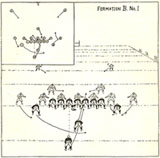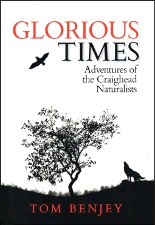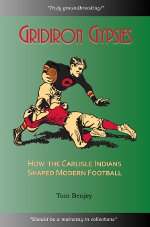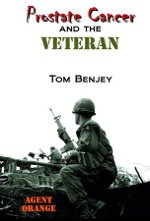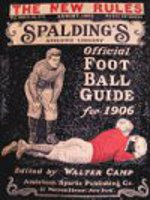Archive for May, 2008
May 30, 2008
The year was 1975, decades before Cumberland County entered the museum business, when Pittsburgh sports entrepreneur Joel Platt proposed to build a major sports museum on the Harrisburg Pike just east of I-81 exit 52 in Middlesex Township. The Sports Immortals complex was to consist of a hotel, restaurant, recreational facilities and a museum containing over a million pieces of sports memorabilia. At the time Platt’s acquisitions dwarfed the combined collections of the Baseball Hall of Fame in Cooperstown, the Pro Football Hall of Fame in Canton, and the Basketball Hall of Fame in Springfield, MA. It may still as Platt continued to acquire significant items after that.
Rep. Bud Shuster (the congressman who never met a road-building project he didn’t like) enlisted the support of former Cardinals pitcher “Vinegar Bend” Mizell, then Asst. Sec. of Commerce, in an attempt to get federal funds for the Sports Immortals museum. However, it was to be build in Shuster’s district near Breezewood where the Pennsylvania Turnpike and I-70 meet. Apparently this undertaking was unsuccessful because Platt showed up in Carlisle.
Carlisle’s leaders of the day were apparently unimpressed. Word has it that the owner of a motel located near the proposed site was strongly opposed to the project. His concerns had nothing to do with having competition for his restaurant and motel move in nearby; he was concerned about the impact on the community by the element that would be attracted by such a facility. Freddie Wardecker lent me his copy of the brochure that Platt handed out at his presentation and I scanned it into a PDF for your viewing pleasure. It would be interesting to see what the reaction would be today if such a facility was proposed for County land near the Military History Institute. Click on the image below to view the Sports Immortals brochure.

Tags:Carlisle PA, Joel Platt, museum, Sports Immortals
Posted in Carlisle Indian School, Football, Jim Thorpe, Lone Star Dietz | 1 Comment »
May 27, 2008
The advance reading copies (called ARCs in the trade) arrived for my new book and are being sent out to reviewers. This is a big moment in a writer’s life: seeing thousands of hours of hard work turned into something tangible. In the old days (pre-computer), ARCs were called galleys, bound galleys or galley proofs. Authors, editors and publishers go over these babies with a fine-tooth comb looking for errors, typos or things that have changed since writing was complete. It is an impossible task because, after all this scrutiny, some typos escape and find their way into the final book. But we try.
Another important use of ARCs is to see how the photos and artwork come out in print. Overall they came out very well, better than expected. But a cartoon about the Oorang Indians from a 1922 Baltimore newspaper is too dim. The challenge now is to figure out how to darken it without losing the detail.
This weekend I received some additional information and a correction regarding Louis Island from a family member who happened to see a previous blog. That was fortuitous because I want the book to be as accurate as possible. This blog is already proving to be of some value. That encourages me to continue with it.
Having these ARCs provides local booksellers the opportunity to provide their customers something extra. People can look at an ARC and pre-order the book if they choose. The bonus, besides being sure of getting a copy of the book as soon as it comes out, is to receive an inscription of his or her choice signed by the author. On-line booksellers also take pre-orders but personalized inscriptions are impractical.

Tags:Add new tag, ARC, biography, book, galleys, Louis Island
Posted in Albert Exendine, Alex Arcasa, Antonio Lubo, Archie Libby, Arthur Sheldon, Bemus Pierce, Benjamin Caswell, Caleb Sickles, Carlisle Indian School, Charles Guyon, Charles Williams, Dickinson College, Doctors, Lawyers, Indian Chiefs, Ed Rogers, Elmer Busch, Emil Hauser, Football, Frank Cayou, Frank Hudson, Frank Mt. Pleasant, Fred Broker, George May, George Tibbits, George Vedernack, Gus Welch, Hawley Pierce, Henry Broker, Hugh Wheelock, Isaac Seneca, James Johnson, James Phillips, Jim Thorpe, Joe Bergie, Joe Guyon, Joe Libby, Joel Wheelock, John B. Flinchum, Leon Boutwell, Lone Star Dietz, Louis Island, Martin Wheelock, Nicholas Bowen, Nick Lassa, Pete Calac, Pete Hauser, Pop Warner, Sampson Bird, Single-Wing, Stacy Matlock, Stancil Powell, Thomas St. Germain, Victor Kelly, Washington Redskins, Washington State University, Wauseka, William Baine, William Gardner, William Garlow, William Newashe | Leave a Comment »
May 23, 2008
People often ask what happened to the great Indian sportsmen. Carlisle produced world class athletes from the mid 1890s to WWI. Haskell picked up the mantle in the 1920s until financial cuts brought about by the Great Depression brought its competitiveness to an end. A few individuals surfaced from time to time but not with the frequency they did in the first two decades of the 20th century. Or so I thought. As it turns out we may have focused our attention in the wrong direction or too narrowly.
Apparently the Bird family holds a Memorial Day rodeo annually in honor of Sammie Bird, son of Carlisle star and captain of the great 1911 team, Sampson Bird. The avuncular Sam Bird bore the responsibility of running the family’s ranches immediately after returning from Carlisle. He looked after his children, grandchildren, siblings and their offspring. It seems that many of the patriarch’s progeny channeled their athleticism toward rodeo competitions. A quick Internet search identified a Sam Bird, grandson of the Carlisle star, his nephew Dustin Bird, and his daughters Brittany and Sammy Jo Bird as current rodeo stars. There may be more.
It is my great hope that someone will read this, fill in the missing pieces and tell me what I have wrong. Then next year I can inform people enough ahead of the rodeo that some will be able to attend.
Tags:Add new tag, Browning, Cut Bank, Dustin Bird, Montana, rodeo, Sam Bird, Sam Burd, Sammy Bird, Sampson Bird, Sampson Burd
Posted in Carlisle Indian School, Football, Sampson Bird | 2 Comments »
May 20, 2008
I called Bob Wheeler to let him know about the auction mentioned last week. http://sports.ha.com/common/view_item.php?Sale_No=709&Lot_No=19835&ic=Left-FeaturedItemMain-071107#Photo. Although the lot was out of almost anyone’s price range, it was important that he know about it, particularly the three audiotapes made by Jim Thorpe. Bob is making an audiobook for his definitive biography of Jim Thorpe and having Jim Thorpe’s voice in it would be a great addition. Bob was way ahead of me – decades ahead. He got copies of the tapes long ago and is working them into his audiobook. So, his audiobook will have things the printed version doesn’t have: Jim Thorpe’s voice for one. It will surely include some of Bob’s experiences interviewing all those people over thirty years ago and will surely include snippets of some of their voices. We’ll just have to wait for it as no release date has been set as yet.
As it turns out, these items come from Joel Platt’s collection that was mentioned in this blog some weeks ago. It appears that Platt periodically offers items for sale. It’s not clear if he receives bids high enough to get him to part with anything. It’s my opinion that the Smithsonian should buy Pratt’s entire collection and use it as the nucleus of a national sports museum – unless Mayor Reed of Harrisburg gets there first.
Tags:auction, Joel Platt, memorabilia, Patricia Thorpe, Robert Wheeler
Posted in Carlisle Indian School, Football, Jim Thorpe | 4 Comments »
May 17, 2008
I just received a copy of Michie by James G. Sweeney. Michie is of course West Point’s venerable Michie Stadium, site of many historic football contests. Sweeney’s description is enough to make one want to spend an October Saturday along the Hudson taking in fall foliage, tradition, spectacle and even a football game all at once. Having served in the Air Force rather than wait for greetings from my friends and neighbors to don an army uniform, I know nothing about West Point. It seems that Army’s football tradition and history is as important to their alumni and supporters as is The Big House to my wife. However, it is not Michie Stadium that caught my attention, it was its predecessor, The Plain.
Before Michie Stadium was inaugurated in 1924, the cadets battled their opponents on The Plain, a large drill field that figures prominently on campus. The Plain was also the site of some historic football games, more historic in my estimation than those played at Michie, but then I’m not a West Pointer. It was on The Plain that the soldiers first met the Indians in hand-to-hand combat in 1905 and the Indians emerged victorious. The Indians of which I speak are the Carlisle Indians who wrestled with future officers for the pigskin three times in their glorious history. The Indians won the first two games, 1905 and 1912, but were routed in 1917, the last year Carlisle fielded a team. After athletics were deemphasized in 1914, Carlisle was no longer competitive and many of the athletes who would have been present in 1917 were in France fighting a shooting war. So, that game doesn’t count for much.
The 1905 and 1912 games were truly historic. Jim Sweeney tells me he is writing something about them. Hearing things from the other side’s perspective will be interesting. Another historic game was played on The Plain in 1913 when a team from a little-known Jesuit college in Indiana was booked to fill an open spot in Army’s schedule.
Tags:Army, James Sweeney, Michie, The Plain, West Point
Posted in Carlisle Indian School, Football | Leave a Comment »
May 13, 2008
No sooner had I posted Friday’s blog when another auction of Carlisle artifacts popped up. Don’t blame me if I’m in a rut; I don’t have any control over these sales. Also, people want to know about such things in a timely manner so they can have a shot at buying these things.
Heritage Auction Galleries has a pile of Jim Thorpe memorabilia for sale, including a helmet and cleats he reputedly wore in games in 1912. They also have quite a number of other things of which I find the audiotapes in Jim Thorpe’s own voice the most interesting. These would be perfect for Big Jim’s biographer to have, assuming that Bob Wheeler has a spare $143,400 lying around. It does include the 20% buyer’s fee. What a bargain. You can see the whole lot at: http://sports.ha.com/common/view_item.php?Sale_No=709&Lot_No=19835&ic=Left-FeaturedItemMain-071107#Photo
At such prices, I can’t suggest that any individual or archive buy any of these things. However, if anyone wants to give me any one of these things, I’d love to have it. A sad thing is that Jim Thorpe’s family tends to get very little from artifact sales as many of the items we have seen offered for sale left the family long ago for little or no money in return. We can hope they do better on this lot. Of everything that has been offered for sale lately, what would you like?
Tags:artifacts, auction
Posted in Carlisle Indian School, Football, Jim Thorpe | Leave a Comment »
May 9, 2008
I have become aware that a historically significant letter written by Pop Warner is up for sale on an Internet site: http://www.historyforsale.com/html/prodetails.asp?documentid=227287&start=2&page=48
The letter was written on October 8, 1951 on Warner’s personal stationery as he was retired by that time and living in Palo Alto, California, where he had earlier coached Stanford University. The letter to Col. Alexander M. “Babe” Weyand contains Warner’s recollections as to when he invented various things and his opinions as to which Carlisle victories were the most significant.
This letter is important because it helps clarify issues currently being debated, some of which I am to blame for raising the issue. Due to Alison Danzig’s writing it had long been thought that Warner had developed the single- and double-wing formations later than Warner states in this letter. I based my 2006 documentary celebrating the centennial of the birth of modern football on statements Warner made in his landmark 1927 book on football and some other sources. This letter supports my position. In their recent books on Jim Thorpe, Sally Jenkins and Lars Anderson generally support the position that Carlisle pioneered modern football when the rules changed drastically in 1906. But Warner’s letter partially debunks their positions that the double-wingback was first unleashed against Army in 1912. He also lists what he considered Carlisle’s most important victories. The 1912 Army game was not among them. More on that in a future post.
The question I have is: why is this important letter up for sale and not in an archive? Two repositories come quickly to mind; Cumberland County Historical Society (CCHS) or West Point – CCHS because it holds numerous records and artifacts from the Carlisle Indian School and West Point because it holds Weyand’s papers. I don’t know if West Point buys papers for its collection but CCHS certainly does. It recently purchased 28 letters written by Jim Thorpe in the 1920s that had nothing to do with Carlisle. The asking price for the Warner letter is about twice what CCHS paid for each of the Thorpe letters. One of the reasons historical documents are so expensive is that there are autograph collectors who are willing to pay large sums just for signatures of famous people. But Warner’s letter to Weyand is valuable for the information it contains.
Tags:Alexander Weyand, Alison Danzig, Army, Cumberland County Historical Society, double-wing, Lars Lars Anderson, Sally Jenkins, West Point
Posted in Carlisle Indian School, Football, Jim Thorpe, Pop Warner, Single-Wing | 2 Comments »
May 5, 2008
The best part of doing this research is the people you meet. The most recent are Iris Davis and Dick Boganwright. Driving back from a wedding in Madison, Wisconsin brought us near Mentone, Indiana where Iris and Dick live. Iris has a photo of their uncle, Louis Island, in his WWI uniform. The photo is mounted in an oval frame with curved glass, something that makes scanning difficult. Taking a photo of a photo that is under glass presents problems of its own, but they were dealt with. By now you may be wondering why I’m babbling on about this.
Louis Island played quarterback, mostly backup, at Carlisle and eventually became a star in the early pro game. He eventually settled in Fort Wayne, Indiana and married Phebe Harsh, who was raised on a farm near Mentone, which is not far from Fort Wayne. Iris Davis and Dick Boganwright’s mother was one of Phebe’s sisters. Iris and Dick remember Dr. Island from family gatherings when they were children. They also remember when he contracted tuberculosis and died. They also remember when his son died from what they thought might have been muscular dystrophy. Dick and Iris recalled that Louis had a grandson who was left the area with his mother when he was a child.
Meeting relatives of Carlisle players is always a pleasure. Sometimes people are surprised to learn that their grandfather or uncle was famous at one time or was a great athlete because their memories of him are often of an old man. The telephone conversations that preceded the visit got them thinking about their uncle and they later remembered things about him that they had forgotten long ago. The visit gave me the opportunity to share with them what I had learned about their uncle.
Tags:Haskell Institute, Louis Island; Fort Wayne Friars
Posted in Carlisle Indian School, Football, Louis Island, Single-Wing | Leave a Comment »
May 3, 2008
Yesterday, the College Football Hall of Fame announced its induction class of 2008 and Lone Star Dietz was again not selected for induction. It also announced that it has renamed the Division I-A class to the Football Bowl Subdivision class. How ironic. If it hadn’t been for Dietz’s showmanship and coaching acumen, the Rose Bowl may have not gotten off the ground. Countless bowl games might not exist if Lone Star’s Washington State team hadn’t upset Fritz Pollard’s Brown team in 1916. Had Dietz’s team performed as had Stanford did in 1902 against Michigan, they might still be holding chariot races and donkey polo games after the Rose Parade. Instead, he showed the country that Pacific Coast football (or at least his team) was the equal of eastern powers and with that New Year’s Day football became a tradition.
But Lone Star Dietz wasn’t a one-trick pony. He turned around a number of ailing programs and still ended his career with a Hall-of-Fame worthy won-loss record. Some would think that winning over 60% of his games at previously losing institutions would be miraculous. Pundits did when they dubbed him “Miracle Man” for turning around the Haskell program. Doing what he did is a lot harder than inheriting a football dynasty and maintaining a winning record. Many of those dynasties fatten up their records on teams like the ones Dietz turned into winners.
It’s not just about the numbers; it’s also about how they got the numbers and Dietz got them the hard way.
Tags:College Football Hall of Fame, Rose Bowl
Posted in Carlisle Indian School, Football, Lone Star Dietz, Washington State University | Leave a Comment »
